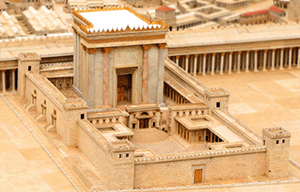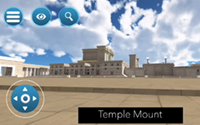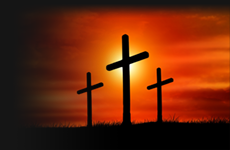
The Jerusalem Temple
Today, there are temples and synagogues everywhere you go. Almost every Jewish community in the world has a synagogue, and many of them are called temples.
Prior to the latter part of the 1st century, however, there was only one Temple, and that one Temple was in Jerusalem. While the building itself was small, the large structure all around it, including the plaza, the porticos, the columns and the staircases, existed on a monumental scale, filling up dozen of acres. This large, grandiose structure attracted pilgrims from near and far, both Jews and gentiles.

In the Temple itself were priests, all descending from Aaron, the brother of Moses. They officiated at the altar, slaughtered animals, roasted them and spattered their blood on the corners of the altar. Only the priests were actually able to penetrate the innermost areas of the Temple, with even the most religious and pious Jews allowed only to go near the outskirts of the Temple.
The actual religious rituals of the Temple were solely in the hands of the priests. If you brought your sacrifice to the Temple for any reason, ( e.g. your wife had a baby, a child recovered from illness, or you were attending a pilgrimage festival), you would bring your animal offering to the priest, he would take it away and slaughter it, and then bring back the portion to which you were entitled for you and your family to eat. So while the performance of ritual was in the hands of the priests, the Temple played a large role in a collective religious mentality.
Israelites believed that the Temple was the most sacred place on earth, and that it was the one place where heaven and earth met. Also, because Jewish religious practice required that these rituals be performed regularly, and only at the Temple, pilgrimage to the Jerusalem Temple and participation in the activities there constituted the single most important force in the molding of Jewish identity.
The way that the Temple was to operate was described by God to Moses in the first five books of the Jewish Bible, (the Torah). From mid-Exodus to the end of Deuteronomy, God details to Moses certain types of legislation, much of which turn upon issues of offerings to be given to God under different circumstances. The Temple became a place of animal offerings, much as in other temples in Mediterranean antiquity. The Temple was also a place of prayer, however, and a place where the Psalms were chanted by the Levites to exhort the people.


